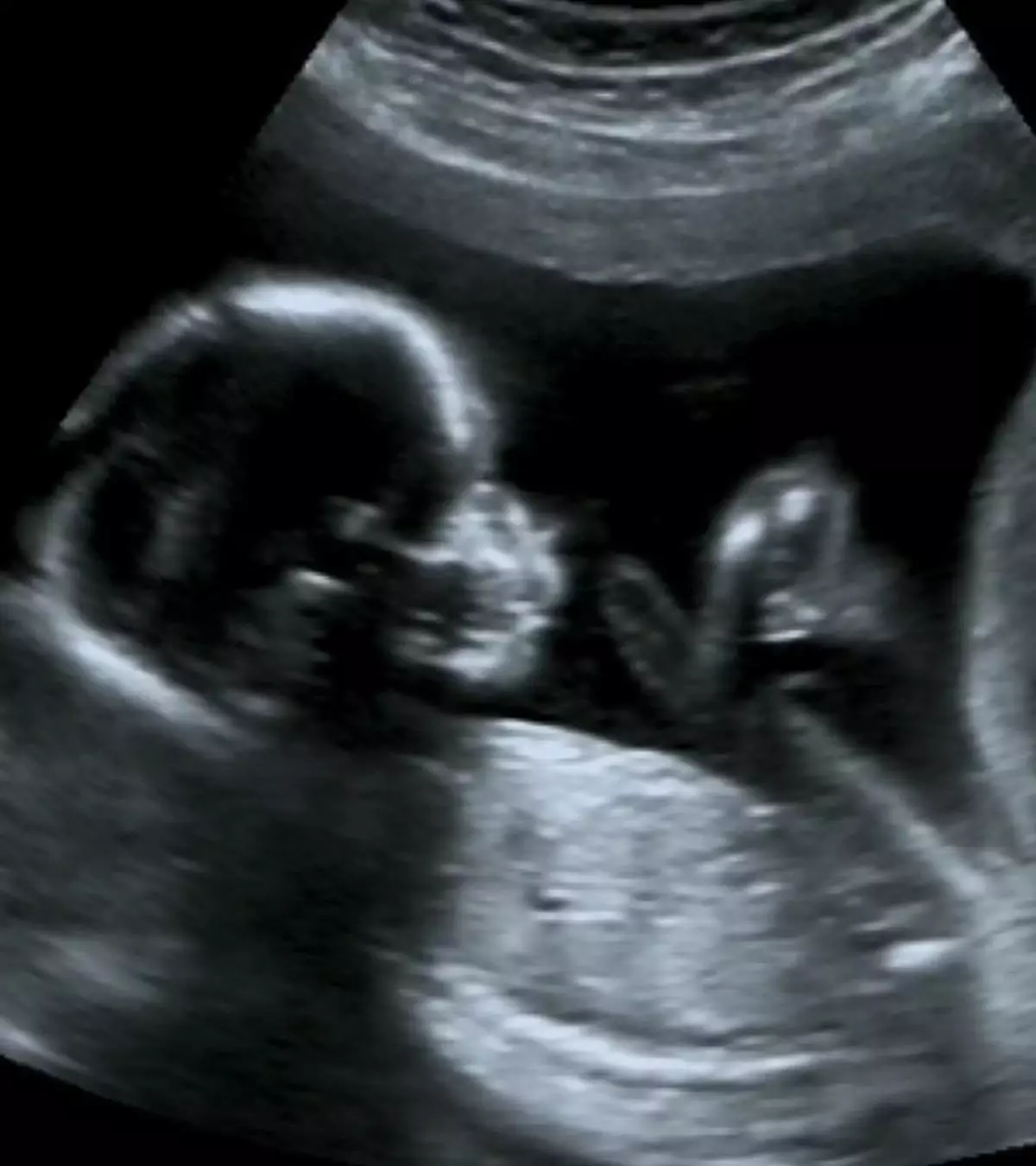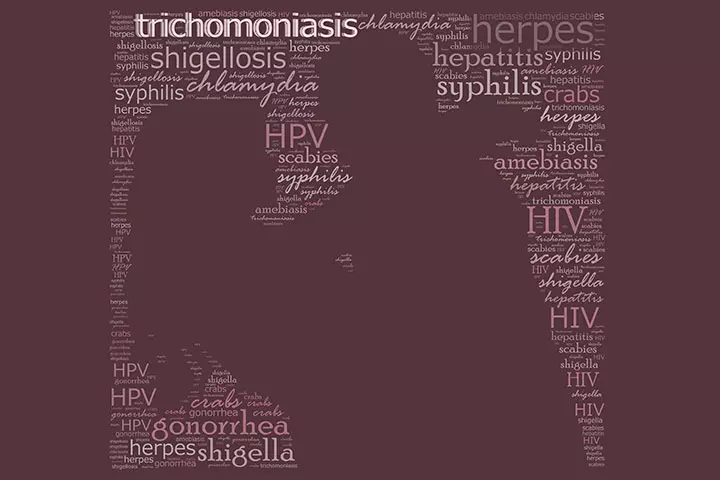
Image: ShutterStock
Parents are often keen to see their babies inside the womb as they wait to hold them. A 4D ultrasound scan shows the live video of your baby, and you may be able to watch them smiling or yawning inside the womb.
Doctors recommend various scans and tests during pregnancy to ensure the wellbeing of both the mother and baby. Some of these tests are mandatory, while a few are optional. For example, the 4D ultrasound is an optional scan since a 3D ultrasound usually suffices to evaluate the baby. Unfortunately, it is illegal in some countries due to various reasons.
Read on to learn more about the 4D ultrasound scan, how it works, what you can expect, and whether your insurance covers it.
Key Pointers
- A 4D ultrasound enables you to view the baby inside the womb in a video-like image.
- The process of obtaining a 4D ultrasound is comparable to other ultrasound procedures.
- 4D ultrasounds are typically performed between 26 and 32 weeks of pregnancy.
- In countries where revealing the baby’s gender is prohibited, 4D ultrasounds are illegal.
- It is always essential to select a qualified professional to conduct the ultrasound.
What Is A 4D Ultrasound Test?
A 4D ultrasound test is a way of reproducing a moving image of your baby inside your womb (1). The 4D ultrasonography is an imaging technology that uses sound waves to create this moving image. In a 3D pregnancy ultrasound, you can see a three-dimensional image of your baby. A 4D ultrasound takes this experience to the next level. It creates an effect that is similar to watching a live video. Using this technology, you can see what your baby is doing at that moment inside your womb. In fact, you can even see if your baby is yawning or smiling at that particular moment!
 Did you know?
Did you know?Benefits of 4D Ultrasound
There are several benefits to a 4D ultrasound scan, including:
- Enhanced bonding: Provides parents with a real-time view of their baby, fostering emotional connections.
- Detailed imaging: Allows more precise visualization of facial features and movements, making it easier to appreciate the baby’s development.
- Memorable experience: Captures moments that can be cherished and shared with family and friends.
How Is The 4D Ultrasound Test Done?
The 4D ultrasound is done in a way that is similar to other obstetric ultrasound procedures during pregnancy.
- You will be asked to lie down on your back on the examination table.
- A special gel will be applied on your belly by the medical technician.

Image: Shutterstock
- This will help to carry the sound waves.
- The technician will then hold a probe on your belly and move it in circular motions to get a good image.
How Does The 4D Ultrasound Work?
Here is how the 4D ultrasound helps in the prenatal imaging of your baby from inside the womb:
- A device known as a transducer is moved along your abdomen.
- This will send the sound waves via your abdomen and through your uterus.
- These sound waves will bounce off your baby in the form of echoes.
- The monitor will pick up these echo messages and translate them on to the screen.
- As your baby moves and kicks about, you will be able to see the images on the obstetric ultrasound screen.
Proper fetal positioning is crucial for obtaining clear images during a 4D ultrasound. If the baby is facing away from the transducer or is in a cramped position, it may limit the quality of the images.
The Results

Image: Shutterstock
While the 4D ultrasound is in progress, your doctor will help you see your baby on the screen. This will help in pregnancy monitoring and enable you to know what your baby is doing right then.
The form of results that you will get from your 4D ultrasound may vary depending on your doctor and the medical procedure. While some results are given in the form of a picture of your baby, some doctors may hand out a proper 4D movie to you.
When Is A 4D Ultrasound Done?
Your doctor will be the best person to tell you when to get a 4D ultrasound.
While some suggest getting it done between weeks 27 to 32, others may suggest getting it done between weeks 26 to 30.
It is important to note that from the 19 to 24 weeks of gestation, the gender of your baby can be determined through these scans (2). While this is legal in some parts of the world, it is considered illegal and punishable by law in other countries. Do have a word with your doctor to know when you can safely get this test done.
Ruli, a mother of one, shares her beautiful experience of seeing their unborn child through 4D ultrasound. She writes, “As my gestation has reached 7 months more or 29 weeks, I decided to do the 4D exam. This is in accordance with my doctor’s advice – as long as the baby hasn’t reached the due date and there is still adequate amniotic fluid surrounding the baby, the baby’s face can be seen clearly.
“In the exam room, we – my husband and I got very excited as the monitor screen was displaying our baby’s image and movement. We could see how the baby smiled, opened his eyes, and heard his heartbeat. His heartbeat is normal, his fingers are complete and he is healthy in my womb (i).”
 Quick fact
Quick factImportant Points To Remember

Image: Shutterstock
It is natural that you may be super excited to see your baby for the first time while still inside your womb. However, do remember that this is not always a good idea.
- According to most studies, 4D ultrasounds are safe and cause no threat to your baby. These 4D ultrasonography scans can also help your doctor spot certain problems with your baby, particularly anomalies which may be picked up in 2D/3D but difficult to visualize otherwise, and discuss them with you before the delivery itself.
- The concern is when you get a 4D ultrasound from companies who offer these results purely for the reason of showing you your baby’s face, and may not be necessarily qualified to look for abnormalities in your baby
- While a 4D scan can sometimes give you a nice picture of your baby’s appearance, it is sometimes dependent on luck and fetal positioning at that moment to get a good angle/photo.
, board-certified obstetrician/gynecologist from Brooklyn, New York, opines, “In typical cases, 2D and 3D ultrasounds are conducted, but 4D ultrasound may be a personal preference for many expecting parents. While 4D ultrasounds are powerful in that they can detect many congenital abnormalities, genetic testing or diagnostic procedures may be required to gain the full scope of any and all birth abnormalities.”
- Ultimately, the 2D ultrasound scan remains the standard of fetal health care developed by sonographers around the world to look for fetal development. It also assesses fetal growth and structural abnormalities in your baby.
It is essential to understand the distinction between medically necessary ultrasounds, which are vital for monitoring fetal health, and keepsake ultrasounds, which are performed primarily for entertainment and bonding purposes. The latter should only be conducted by qualified professionals to avoid potential risks to the mother and baby.
Frequently Asked Questions
1. Can a 4D scan show the sex of the baby?
Yes, all ultrasound scans, including 4D scans, can show the sex of the baby (3).
2. How is 3D ultrasound different from 4D ultrasound?
A 3D ultrasound allows doctors to visualize some facial features and body parts of the fetus more clearly. A 4D ultrasound, on the other hand, is a 3D ultrasonography in motion. It shows embryonic movements with clarity (4).
3. Are 4D ultrasounds a standard practice?
No, 4D ultrasound has been recently introduced and is not a standard practice. Doctors mostly use it to complement 2D and 3D observations (4) (5).
4. What is the best position for a baby 4D scan?
4D ultrasounds help you view a moving three-dimensional image of your baby from inside your womb. The procedure is similar to that of a normal ultrasound such as a growth scan during pregnancy, but this procedure uses sound waves instead of ultrasonic waves. It is advisable to get this ultrasound done either by the end of the second trimester or the beginning of the third trimester to capture a true image of the baby. Remember to consult your doctor before going through this procedure since it is optional. It is done so that couples can have a better look at their baby.
Infographic: Uses Of A 4D Ultrasound
4D ultrasounds can provide parents-to-be with a more detailed and interactive view of their unborn child, which can be a unique and exciting experience. However, it’s important to know a few things before having a 4D ultrasound. This infographic will provide an overview of the advantages a 4D ultrasound offers.

Illustration: Momjunction Design Team
Illustration: What Is A 4D Ultrasound Scan? Importance And How It Works

Image: Dall·E/MomJunction Design Team
Personal Experience: Source
MomJunction articles include first-hand experiences to provide you with better insights through real-life narratives. Here are the sources of personal accounts referenced in this article.
i. Seeing the unborn baby through 3D/4D ultrasound scan;https://rulihapsari.wordpress.com/2012/02/18/seeing-the-unborn-baby-through-3d4d-ultrasound-scan/
References
- New Dimensions in Prenatal Ultrasound: 3D and 4D.
https://winchesterhospital.org/health-library/article?id=24199 - Gestational Age.
https://medlineplus.gov/ency/article/002367.htm - 20-Week Ultrasound (Anatomy Scan).
https://my.clevelandclinic.org/health/diagnostics/22644-20-week-ultrasound - Ultrasound.
https://my.clevelandclinic.org/health/diagnostics/4995-ultrasound - Dr. Florentina-Daniela Lebit and Professor Dr. Radu Vladareanu; (2011); The Role of 4D Ultrasound in the Assessment of Fetal Behaviour.
https://www.ncbi.nlm.nih.gov/pmc/articles/PMC3239390/ - Ritsuko K. Pooh and Asim Kurjak; (2011); 3D/4D sonography moved prenatal diagnosis of fetal anomalies from the second to the first trimester of pregnancy.
https://www.tandfonline.com/doi/full/10.3109/14767058.2011.636107 - Why to avoid ‘keepsake’ 3-D and 4-D ultrasounds;
https://utswmed.org/medblog/3d-4d-ultrasound/ - B. Tutschek et al.(2017); Three-dimensional ultrasound imaging of the fetal skull and face;
https://obgyn.onlinelibrary.wiley.com/doi/10.1002/uog.17436
Community Experiences
Join the conversation and become a part of our nurturing community! Share your stories, experiences, and insights to connect with fellow parents.
Read full bio of Dr. Ng Kai Lyn
- Dr. Ila Dayananda, a board-certified obstetrician & gynecologist, most recently served as the chief medical officer for Planned Parenthood of Greater New York. She studied medicine and master's in Public Health at Northwestern University Medical School and then pursued an OB/GYN residency at the Beth Israel Deaconess Medical Center in Boston, MA. Dr. Dayananda holds a Family Planning Fellowship at Brigham and Women's Hospital/Harvard Medical School in Boston, MA.
 Dr. Ila Dayananda, a board-certified obstetrician & gynecologist, most recently served as the chief medical officer for Planned Parenthood of Greater New York. She studied medicine and master's in Public Health at Northwestern University Medical School and then pursued an OB/GYN residency at the Beth Israel Deaconess Medical Center in Boston, MA. Dr. Dayananda holds a Family Planning Fellowship at Brigham and Women's Hospital/Harvard Medical School in Boston, MA.
Dr. Ila Dayananda, a board-certified obstetrician & gynecologist, most recently served as the chief medical officer for Planned Parenthood of Greater New York. She studied medicine and master's in Public Health at Northwestern University Medical School and then pursued an OB/GYN residency at the Beth Israel Deaconess Medical Center in Boston, MA. Dr. Dayananda holds a Family Planning Fellowship at Brigham and Women's Hospital/Harvard Medical School in Boston, MA.
Read full bio of Rebecca Malachi
Read full bio of Swati Patwal
Read full bio of Aneesha Amonz





















